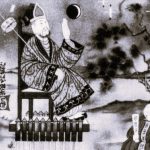

The Greeks combined dietetics, medicines, surgery and regulating the whole life-style in their treatment of ailments. Diet, or regimen – in the broad sense of the whole lifestyle – was the first resort. Individuals were advised on how to live in order to remain healthy. Training for the army and athletic competition (such as the Olympics) similarly focused on regulation of food and drink, exercise, bathing and massage. In line with this ‘prevention is better than cure’ approach, On the Nature of Man, one of over 70 texts attributed to Hippocrates, suggested that there were four humours. These must stay in balance if the person is to be healthy, and they are affected not only by the person’s lifestyle but also by external factors such as the seasons, the climate and the place where someone lives. Surgery remained the last resort, but surgical skills were developed on the battlefield and, by the great doctor Galen, in the gladiatorial arena.
Between lifestyle and surgery lay a huge range of medicines made mostly from plant substances. Many drugs were purges, intended to evacuate any humoral excess. Lists of remedies would often include readily-available options as well as more exotic spices, thus catering for different patients’ purses.

A religious healing system, the cult of Asklepios (a Greek god of healing), had begun in Greece by at least the eighth century BCE, and by the third century BCE it had spread to Rome, then throughout the Roman empire, as the cult of Aesculapius. As the cult spread, the original shrines developed into great spa complexes with hostels, baths, gymnasia and theatres growing up around the healing waters of the thermal or mineralised springs. Healing took place by ‘incubation’, in which the pilgrim slept and dreamed that the god gave advice on how to cure the disease. However, doctors were also on the staff at healing shrines.
The Roman penchant for bathing, which could take an entire afternoon and include a massage and having your eyebrows plucked, as well as your sauna and swim, may account for the continuing popularity of the Greek spas. Excavations of Roman towns and military forts have uncovered baths and flushing toilets. A good water supply was provided via aqueducts, although the extent to which these were associated with hygiene, in our sense of the word, remains a topic of academic debate.
The first buildings for housing the sick were the Roman military hospitals (valetudinaria) constructed in forts across the empire. These hospitals, such as the one at Chester, were designed with small rooms opening off a corridor around a square or rectangular courtyard and primarily cared for the sick, rather than those injured on the battlefield. There is still debate over whether all buildings of this shape were hospitals, or whether the rooms were storerooms.

De materia medica. Lyon, 1554 / Wikimedia Commons
The Romans made use of home remedies, such as Cato’s universal panacea, the cabbage, for which he describes endless uses, both internal and external, from a hangover cure to treatment for wounds and sores. Dioscorides’ De materia medica (On Medicines) gave detailed descriptions of how to harvest, prepare, store and test for contamination of medicinal herbs and continued in use well into the Renaissance.
Midwives were highly respected in Roman society and those servicing elite households were either slaves or freedwomen (ex-slaves). Soranus’ Gynaecology, the first surviving medical text concerned with obstetrics, describes various methods for assisting childbirth. He described the use of a birthing stool, a four-legged stool with arm and back supports as well as a crescent-shaped opening for delivery of the baby.
Doctors were often either slaves or foreigners, who were exempt from military service and taxation, and were attached to a household, independent or paid by the town. But by the second century CE wealthy free individuals such as the Greek Galen (c.129-c.216 CE), who eventually practised in Rome, were merging practical medicine with philosophy. Galen’s observations of anatomy were based on animal dissections and vivisections, which he then used to interpret human anatomy. His first anatomical observations of humans were made during his time as a gladiators’ surgeon, where the gaping wounds resulting from combat provided windows into the internal structure of the human body. He also studied the bodies in roadside catacombs.

After Galen’s death his ideas were simplified and became the basis of medicine up to the Renaissance. In particular, his focus on the four humours was merged with other ‘fours’, including the elements, qualities, seasons and age groups.
Originally published by The Open University, 08.30.2019, under the terms of a Creative Commons Attribution-NonCommercial-ShareAlike 4.0 International license.






